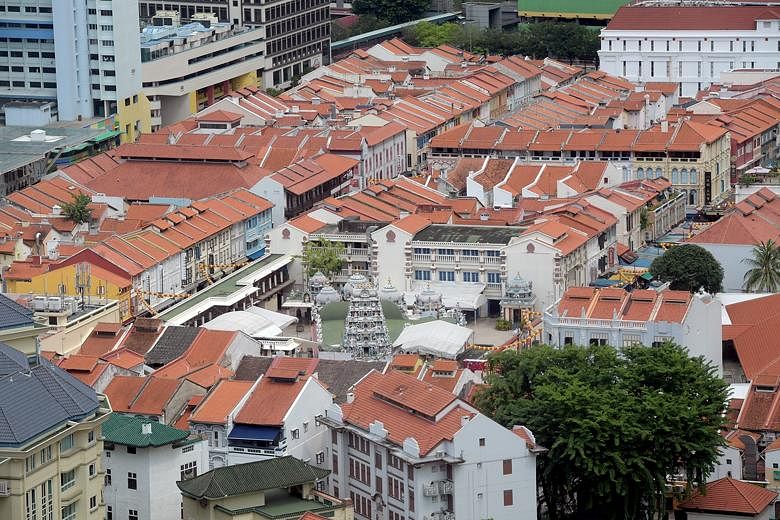SINGAPORE - Regular checks on the facade of older buildings will soon be introduced, with legislative changes due to take place by year end.
The rules will apply to buildings above 20 years old and taller than 13m, about the height of three storeys, and inspections will take place every seven years.
Currently, there are no requirements for building owners to inspect facades.
"Building owners will be given about one year's lead time to prepare before the requirements come into effect," Second Minister for National Development Desmond Lee said in Parliament on Tuesday (March 6).
He was responding to questions by Mr Chong Kee Hiong (Bishan-Toa Payoh GRC), who had asked how the ministry enforces regular maintenance and checks in the industry.
Mr Chong brought up recent incidents involving cladding falling off buildings and added that while there are currently periodic structural inspections, these do not cover non-structural parts such as exterior features.
"Such checks are particularly important as the number of ageing buildings increases," said Mr Chong.
Currently, the Building and Construction Authority (BCA) regulates two aspects of building facade safety.
First, the structural design of some facades has to comply with relevant design codes and such works have to be done by a licensed builder according to approved plans under supervision of a qualified person.
Second, the Building Maintenance and Strata Management Act "places a general duty" on building owners to ensure building exteriors are maintained well, said the Ministry of National Development. But there is no requirement to inspect facades.
The new inspection regime will consist of two stages - the first being a full visual inspection to check for deterioration such as corrosion and cracks. The second is a hands-on inspection of at least 10 per cent of the building face. This helps to complement visual inspection, for example, in checking for hollowness.
Industry players The Straits Times spoke to welcomed the changes but also expressed concerns that youngerbuildings do not have to be inspected.
Engineering consultancy Arup Singapore's principal facade engineering leader Michael Chin said the move has been "a long time coming" and that BCA had consulted industry players beforehand.
"The facade is one element sitting on the outside and most of the time, it would not be inspected unless there are issues," he said.
He added that serious incidents, such as parts of a facade falling off, can be prevented through the inspections.
But he pointed out that newer buildings below 20 years old can also be at risk. "Some of these may have inherent defects at completion, which may not be detected," said Mr Chin.
Several batches of participants have completed a new course to certify facade inspectors, held at the Building and Construction Authority Academy.
This new group of qualified people will help in the inspection process along with qualified personnel such as professional engineers or registered architects.
BCA is also investing in research and development on facade inspection technologies to see how the checks can be carried out more effectively.
The authority and the Housing Board have called for proposals to develop a drone inspection system to inspect building facades.


